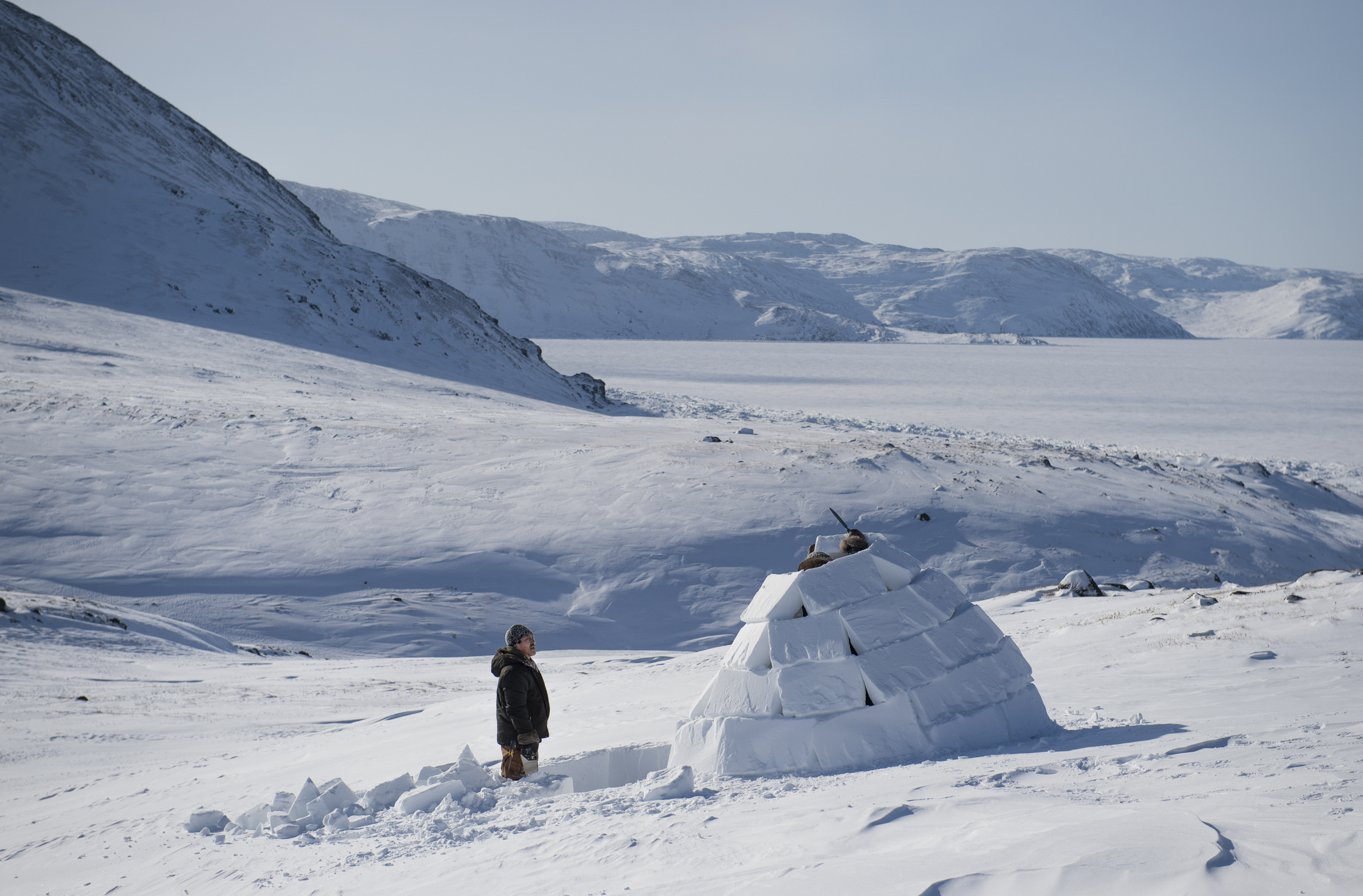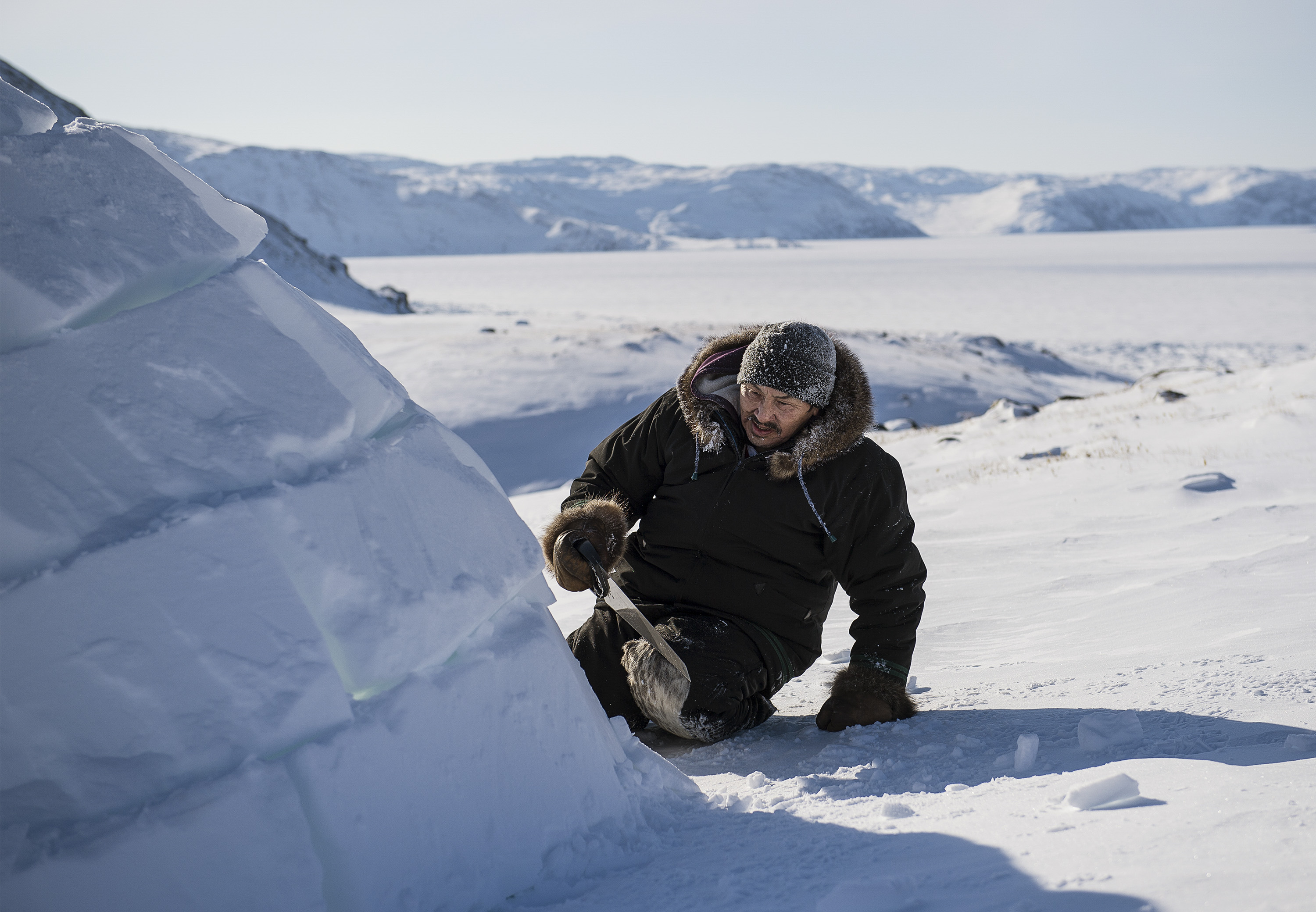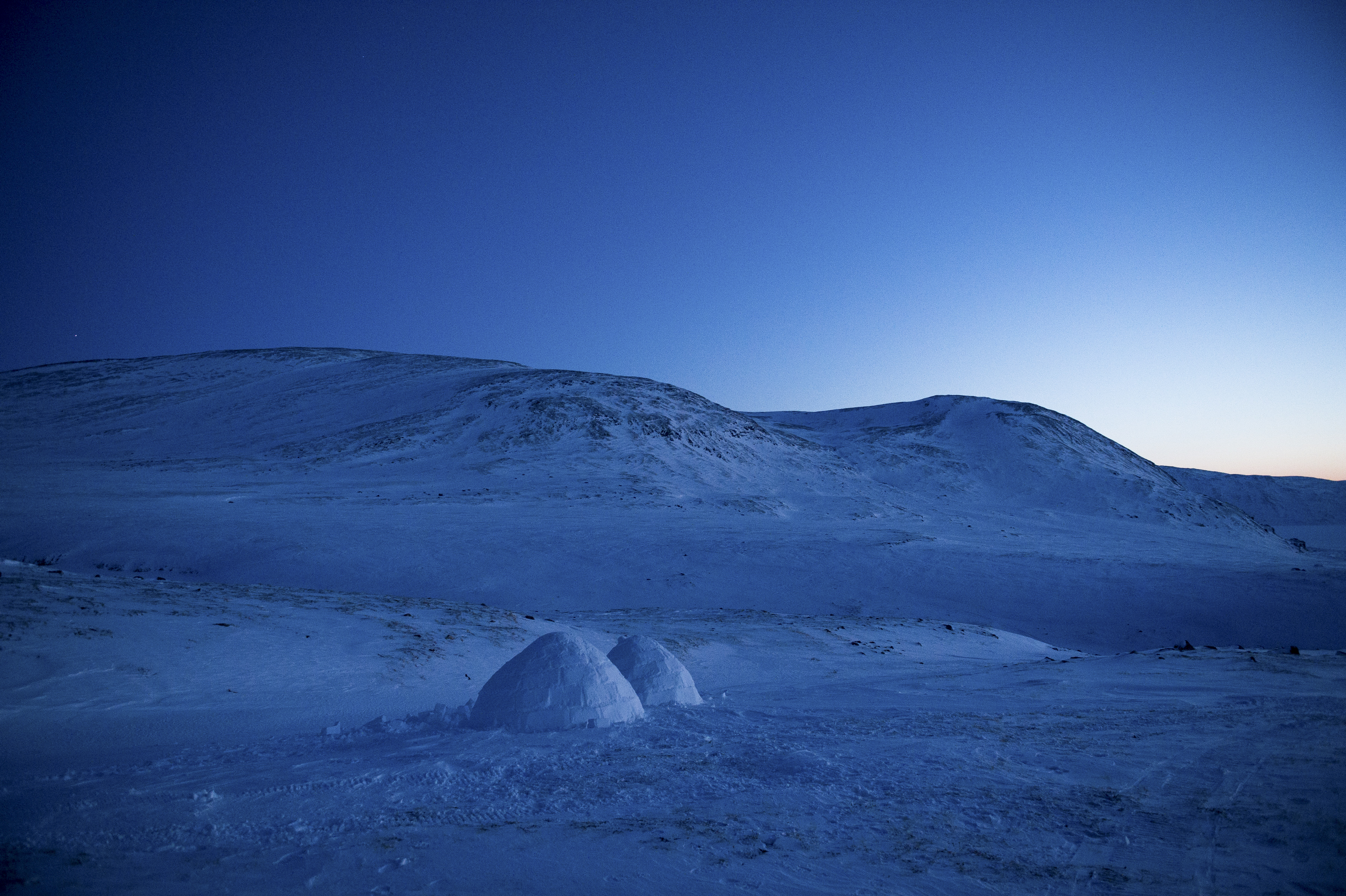A lost art in the Arctic: Igloo making

KANGIQSUJUAQ, Quebec — Adami Sakiagak, his tongue poking out of the side of his mouth in concentrated effort, trimmed the edges on a block of snow above his head. Ice crystals cascaded around him as the block settled into place, the capstone of an igloo, that architectural structure so characteristic of the Arctic.
Sakiagak’s parents were born in igloos and he learned to build the snow domes with his father growing up on the open tundra as a child. Now, Sakiagak, a 57-year-old Inuit, builds them to teach younger generations the disappearing craft.
“At one time people had no camps,” he said, referring to shelters now scattered across traditional hunting and fishing grounds. “And any person who went out onto the land, they usually built an igloo.”
Canadian investment in the Arctic was negligible until the Cold War, when the region had a string of military bases to guard against Soviet attack. Well into the 1950s, the Inuit followed their ancient ways, living off the land. Even today, many Inuit depend on hunting and fishing to survive.

Kangiqsujuaq is a typical Northern town. Its plain, boxy buildings sit on stilts to prevent thawing the permafrost below. The roads are gravel but packed with snow most of the year, traversed by four-wheel-drive pickups and all-terrain vehicles and ubiquitous snowmobiles.
Granite hills rise around the town, which faces a large, frozen bay. Other than the rocky cliffs and boxy buildings, most everything is white during the long winter. On clear nights, the velvety black sky is sprayed with stars and hung with greenish garlands of ghostly northern lights.
Sakiagak set out late this winter to demonstrate how to build an igloo. He began by searching for snow that is solid, but not too dense, and is found where the wind has blown across the barren landscape interlocking the fine ice crystals into a compact stratum several feet thick.
He got off his snowmobile to test various spots, sticking a saw into the snow. He settled on a gentle slope of solid white overlooking Wakeham Bay, where a distant dog sled made its way across the flat expanse. The sky, bleached by the afternoon sun, was robin’s egg blue at the horizon, darkening to indigo directly overhead.
Sakiagak got to work, drawing a circle in the snow to mark the igloo’s perimeter. A friend, Tiisi Qisiiq, began cutting blocks of snow with a carpenter’s crosscut saw. Saws have replaced the walrus tusk knives that the Inuit favored for building igloos a generation ago.
Sakiagak laid a ring of blocks and trimmed the first few to form a ramp so that he would be building in a continuous spiral. This way, he had only one end block to worry about as the igloo rose around him. The blocks were as sturdy as Styrofoam, but heavier.
He beveled the top edge of the blocks inward so that by the third or fourth row he was laying them at a 45-degree angle to the ground. Now, with the capstone in place, Sakiagak was effectively entombed.
Martin Frobisher, the 16th-century English explorer, may have been the first European to see an igloo when he passed by during his failed search for the Northwest Passage. Since then, people have marveled at the ingenuity of the design, which incorporates principles of physics and thermodynamics to create an optimal shelter in the frozen north.
Engineers say the Inuit, through trial and error, devised a design based on a parabola, not a semicircle, eliminating the forces that would make a true hemisphere bulge and collapse. Snow is an excellent insulator, trapping air between the snowflakes, while white reflects light and heat, so most of the heat generated inside an igloo stays there.
The blocks to make the igloo were cut outside the front, leaving a trough that would serve as entryway. Sakiagak turned to digging out the igloo’s interior, leaving a platform at the original level of the surface while excavating the rest. He pushed the excess snow out of a hole that he had broken through to the trough outside. When he was done, even a tall person could stand comfortably in the room.
The coldest air settles at the door near the floor, which is below the surface of the surrounding snow outside. The warmer air, of course, rises so that the temperature around the sleeping platform, while still cold, is well above freezing and can reach 40 degrees Fahrenheit or more while it is 30 below freezing outside.
Sakiagak cut a vent hole near the apex, crawling outside to carve a jaunty chimney spout out of snow. In the old days, he explained, he would cut a hole for a window, fitting a two-foot-square block of ice in the frame, to brighten the inside during the day. He and Qisiiq began filling the cracks between the blocks with slices of snow.
“These days it’s for survival,” he said. “When you go out on the land without your things and your machine breaks and you cannot reach your cabin, you can build an igloo.”
He said that only about a dozen people in Kangiqsujuaq, a town of more than 800 people, are capable of building snow houses now. “The ones who used to build igloos are too old,” Sakiagak said.
With the igloo done, he pulled his gear inside and lit a Coleman stove to boil water for tea. He and Qisiiq sat and smoked and ate some char, an Arctic cousin of the salmon, hacking pieces off the frozen fish with a hatchet and eating it raw.
